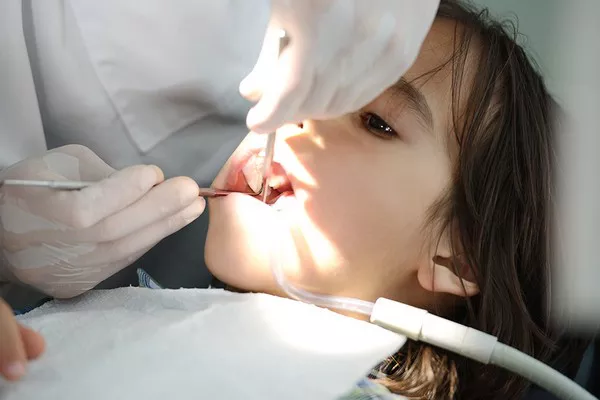When it comes to maintaining optimal oral health, regular dental check-ups play a crucial role. Among the various dental procedures, a deep cleaning, also known as scaling and root planing, stands out as a significant step towards preventing gum disease and ensuring a healthy smile. In this comprehensive guide, we delve into the intricacies of what happens during a deep cleaning at the dentist, shedding light on the importance of this procedure for your overall oral well-being.
1. Understanding the Basics of Deep Cleaning:
At its core, deep cleaning involves two essential processes—scaling and root planing. Scaling aims to remove plaque and tartar from the surfaces of your teeth and beneath the gumline, while root planing smoothens the root surfaces to discourage further buildup. This dynamic duo forms the foundation of a deep cleaning procedure, providing a thorough solution to combat gum disease.
Scaling: The First Line of Defense Against Plaque and Tartar
Scaling is a meticulous process where dental professionals use specialized tools to eliminate plaque and tartar deposits on the tooth surfaces. These deposits, if left unchecked, can lead to the development of gum disease and other oral health issues. By systematically scaling the teeth, dentists ensure the removal of these harmful substances, contributing to the prevention of dental problems down the line.
Root Planing: Smoothing Out Potential Trouble
Root planing complements scaling by addressing the root surfaces of the teeth. This process is crucial for preventing the recurrence of plaque and tartar buildup. Dental professionals carefully smooth out the root surfaces, making it more challenging for bacteria to adhere and form deposits. This step not only aids in preventing gum disease but also promotes overall gum health.
2. The Importance of Deep Cleaning in Preventing Gum Disease:
Gum disease, if left untreated, can escalate into a more severe condition, posing a threat to both oral and systemic health. Deep cleaning serves as a proactive measure to prevent and manage gum disease, playing a pivotal role in preserving the integrity of your gums and teeth.
Halting the Progression of Gingivitis
Gingivitis, the initial stage of gum disease, is characterized by inflammation of the gums. A deep cleaning effectively removes the irritants causing this inflammation, halting the progression of gingivitis and preventing it from advancing into more severe stages.
Managing Periodontitis: A Comprehensive Approach
For individuals already experiencing periodontitis, deep cleaning becomes even more crucial. By targeting the root cause of the disease—plaque and tartar deposits—dentists can manage and control the progression of periodontitis, preserving the supporting structures of the teeth and preventing tooth loss.
3. The Deep Cleaning Process: What to Expect During Your Appointment:
Embarking on a deep cleaning journey may seem daunting, but understanding the process can help alleviate any concerns. A typical deep cleaning appointment unfolds in several stages, ensuring a thorough and personalized approach to your oral care needs.
Comprehensive Dental Examination
Before diving into the deep cleaning procedure, your dentist will conduct a comprehensive examination of your oral health. This includes assessing the extent of plaque and tartar buildup, evaluating the health of your gums, and identifying any areas of concern.
Local Anesthesia for Comfort
To ensure your comfort during the deep cleaning process, local anesthesia may be administered. This numbing agent minimizes any potential discomfort, allowing you to undergo the procedure with ease.
Scaling and Root Planing: A Systematic Approach
The heart of the deep cleaning procedure involves the meticulous scaling and root planing of your teeth. Dental professionals will use specialized tools to remove plaque and tartar deposits, paying special attention to areas beneath the gumline.
Post-Procedure Care and Recommendations
Following the deep cleaning, your dentist will provide you with valuable post-procedure care instructions. This may include recommendations for at-home oral hygiene practices, follow-up appointments, and tips for maintaining optimal oral health.
4. Recovering After a Deep Cleaning: Tips for Optimal Healing:
Understanding how to care for your oral health post-deep cleaning is paramount to ensure optimal healing and long-term success. Implementing proper post-procedure care practices can contribute to the effectiveness of the deep cleaning and reduce the risk of complications.
Adhering to Oral Hygiene Recommendations
Your dentist will likely provide specific oral hygiene recommendations tailored to your needs. Adhering to these guidelines, which may include special toothbrushes, mouthwashes, or additional dental tools, enhances the effectiveness of the deep cleaning and supports your overall oral health.
Attending Follow-Up Appointments
Follow-up appointments are essential to monitor your recovery progress and address any concerns that may arise. By attending these appointments, you can work collaboratively with your dental team to ensure the success of the deep cleaning procedure and maintain a healthy smile.
In conclusion, a deep cleaning at the dentist goes beyond the surface, offering a comprehensive solution to combat gum disease and promote optimal oral health. By understanding the intricacies of the deep cleaning process, its importance in preventing gum disease, and the steps involved in the procedure, individuals can approach their dental appointments with confidence, knowing they are actively contributing to their long-term oral well-being. Remember, a healthy smile begins with proactive dental care, and a deep cleaning is a key player in this journey toward optimal oral health.
Related Links:
Unveiling the Mystery: What is a Deep Cleaning Called at the Dentist?
Unveiling the Wonders of Deep Cleaning: A Comprehensive Guide to Its Benefits and Techniques
Unlocking the Secrets: How Much Should a White Filling Cost?































